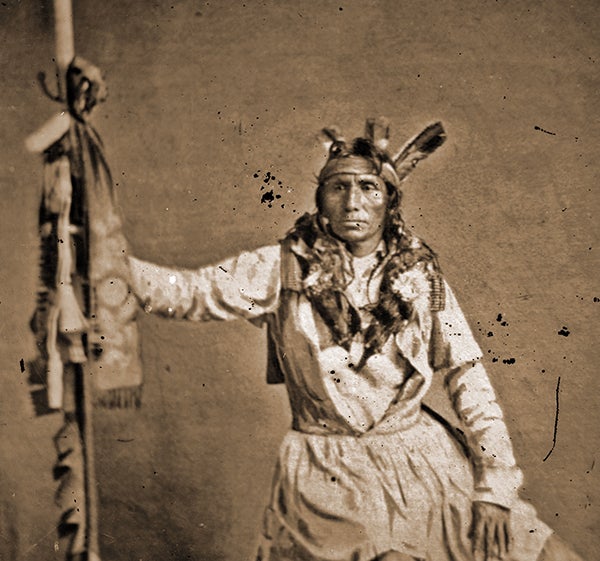Little Crow’s War, finale
Published 4:56 pm Tuesday, October 31, 2023
|
Getting your Trinity Audio player ready...
|
By Jadon Gibson
Contributing Columnist
Was it a coincidence that the Dakota’s annuity payment from the U.S. government arrived on the day the Dakota War, or Little Crow’s War, began? In any event it arrived too late to stop the destruction as Dakota attacks were already set in motion.
The annuity payment was for the Sioux or Dakota land, the sale of which relegated the Indians to a 20-mile-wide reservation along the upper Minnesota River. The Dakota was part of the Sioux. The annuity payments had been consistently late or non-existent causing the Indians untold hardship. Chief Little Crow was largely responsible for the beginning of the war which caused him to lose much of his good standing among his people.
The need for food was the main cause of the Dakota War of 1862. The Dakotas had several early successes due to the number of adversaries and the advantage of surprise attacks but it soon turned against the Dakotas. Most Dakota fighters surrendered soon after the Battle of Wood Lake on September 26,1862. They also released 269 captives to former Minnesota governor, Col. Henry Sibley, some of whom were descendants of Dakota women. Little Crow avoided capture by fleeing to Canada.
More than 300 Dakota prisoners were brought before military tribunals in early December. They were convicted of murder, rape and mayhem with many of the trials lasting less than five minutes. Most of the Indians didn’t fully understand what was happening nor were they represented by defense counsel.
Episcopal Bishop Henry Whipple who lobbied for the reform of government policies toward Native Americans urged President Abraham Lincoln to offer leniency. Minnesota Sen. Morton Wilkinson and Gen John Pope told the president that “leniency would not be received well by the settlers because of the atrocities committed during the Indian uprising.” President Lincoln reviewed the trial records, desirous of distinguishing between those who engaged in warfare against the United States and those who committed crimes against civilians.
“Private revenge will take the place of the official sentence if all 303 are not executed,” Minnesota Gov. Alexander Ramsey wrote in a letter to the president. “It would be wrong to refuse this. More hangings would result in a large electoral majority in the election of 1864.”
“My conscience would not allow me to hang men for the purpose of gaining votes,” the president replied before commuting the death sentence of 264 prisoners. An additional Indian, Tatemina, was granted a reprieve therefore he did not face the gallows.
A mass hanging of 38 Dakotas was carried out on Dec. 26, 1862 in Mankato, Minnesota, all on a single platform. They were led from their quarters blind-folded and in single file. Their hands were tied tightly before them. Once the nooses were tied around their necks the 38 men began singing the Dakota death chant in unison and began swaying back and forth as a group causing the scaffold to move back and forth with them.
When the provost marshal yelled for them to stop the Dakotas asked that the death masks covering their faces be removed. They were not and the Indians began individually yelling their names and the names of others who were being hanged. They swung their arms side to side in harmony until several of the doomed men were able to grasp the hand of those next to them. The provost marshal and soldiers hurriedly climbed down from the scaffold.
A drummer began slow, rolling beats and the Indians resumed their shouting which could be heard throughout the large crowd. Soon the trapdoors were sprung and the men fell through and death followed almost immediately. The rope of one to the men broke with his body falling clumsily against the frozen earth. Although his neck was broken like the others he was hanged again.
All but two had been baptized two days prior. All were buried in a single trench on the riverbank. It was the largest mass execution in American history. The Indians who were granted a reprieve by President Lincoln watched the hanging through the chinks of the building in which they were held.
It is interesting that one year later Little Crow mistakenly felt it was safe to return to Minnesota. On the fateful day of July 3, 1863 the famed Dakota chief was shot and killed while picking raspberries with his son. A bounty of $500 was paid to Nathan Lamson.
Little Crow’s son converted to Christianity and became a Presbyterian minister, serving as a Marine in France during World War I. He attended medical school following military service and became an outstanding medical doctor.
It is unfathomable that one of his daughters, Ida discovered her father Little Crow’s bones hanging on display in a Minnesota museum. After notifying her brother Jesse he took legal steps to gain the return of the bones of his grandfather. They were returned and properly buried by the Dakotas in 1971.
The United States congress abolished the reservation in 1863 and declared all treaties with the Dakotas null and void. They also took steps to expel the Dakotas from Minnesota.
The remaining prisoners whose death sentences had been commuted by President Lincoln remained in prison nearly four years before being sent to Nebraska. Several years later many of the Dakotas began filtering into the general American population with several returning to Minnesota.
Jadon Gibson resides in Harrogate, Tennessee. Thanks to the Museum of Appalachia for their assistance.







